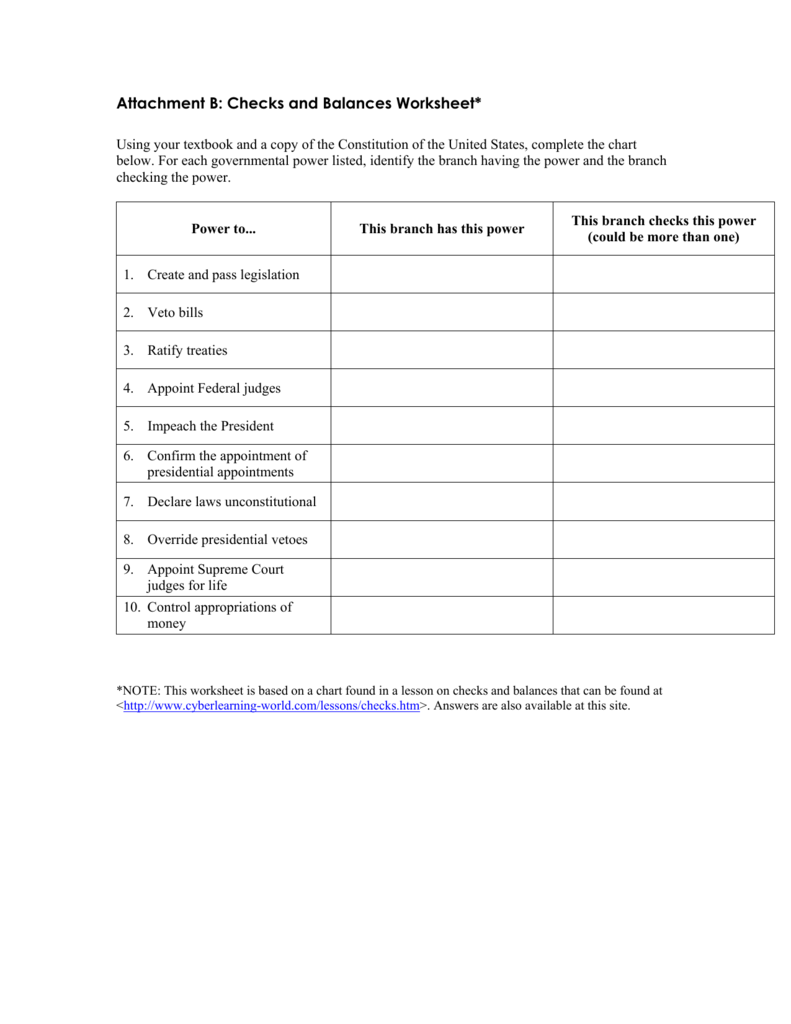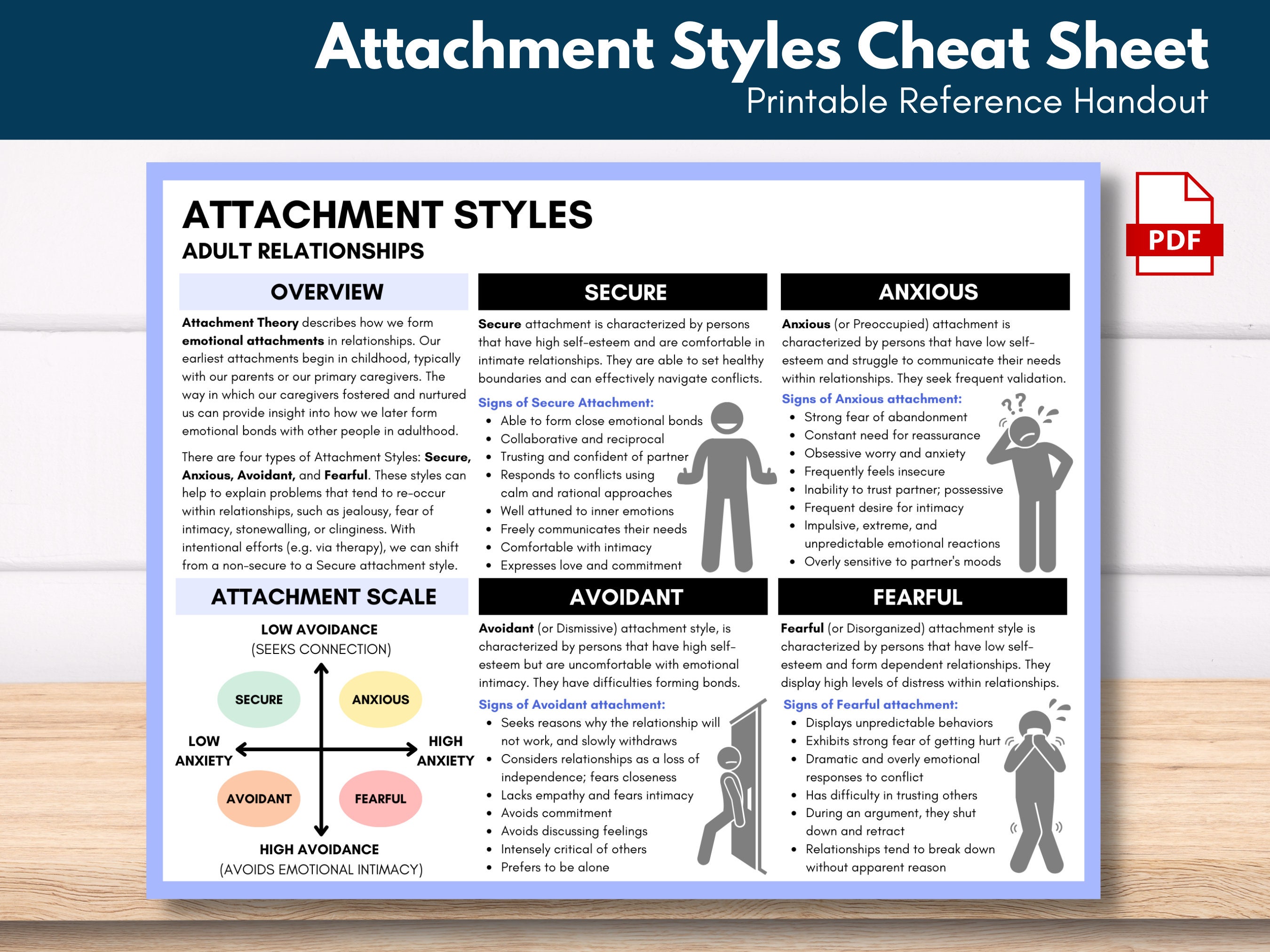Printable Attachment Theory Worksheets
Printable Attachment Theory Worksheets - Web unpack and understand anxious attachment patterns, secure attachment style, and everything in between with this informative guide and essential theory worksheet. It can be helpful as an educational tool in relationship and family counselling sessions to guide individuals into recognizing their attachment styles. Individuals with this style often have a history of trauma or abuse, and they struggle to trust others while also desiring close relationships. Web we explore several questionnaires to find the best attachment style test to assess and measure your client’s attachment style. Web use this practical reference guide to better understand how each of the four attachment styles presents (in a clinical setting) within the context of adult relationships. Web by neurolaunch editorial team september 12, 2024. Ideally a (current or past) partner. Powerful tools to promote understanding, increase stability, and build lasting relationships is a comprehensive guide designed to help individuals and couples improve their relationships. The attached chart maps each attachment style to distinct defining characteristics and traits. Web if you’re searching for a way to create stronger, healthier, and more authentic relationships with the people you love, the attachment theory workbook can help.
Web we explore several questionnaires to find the best attachment style test to assess and measure your client’s attachment style. Web if you’re searching for a way to create stronger, healthier, and more authentic relationships with the people you love, the attachment theory workbook can help. Web use this practical reference guide to better understand how each of the four attachment styles presents (in a clinical setting) within the context of adult relationships. Web this worksheet will provide information about the characteristics of a secure attachment style. Web by neurolaunch editorial team september 12, 2024. Web attachment nerd's practical takeaway downloads and worksheets offer valuable guidance for busy parents on how to cultivate secure attachment relationships. Web the attachment styles & romantic relationships worksheet is an accessible overview of attachment and the four main attachment styles: 446 pages, including 114 pages of practical exercises. It can be helpful as an educational tool in relationship and family counselling sessions to guide individuals into recognizing their attachment styles. Web this interactive quiz and printable worksheet focus on the attachment theory and its role in human development.
You'll get your scores on the. Web this interactive quiz and printable worksheet focus on the attachment theory and its role in human development. 446 pages, including 114 pages of practical exercises. The attached chart maps each attachment style to distinct defining characteristics and traits. Then you will look at ways for people with anxious or avoidant styles to learn new, healthier ways to connect to other people as adults. Web by neurolaunch editorial team september 12, 2024. Web your ultimate digital workbook includes everything in the anxious attachment style workbook plus: How to approach attachment styles in therapy. Web the attachment theory workbook: Let’s turn now to an exercise that will help you understand what your anxious attachment behavior is really about.
Printable Attachment Theory Worksheets Printable Templates
Web attachment believes their close relationships are trustworthy, whereas someone with insecure attachment tends to distrust or worry about their bond with others. Web this worksheet will provide information about the characteristics of a secure attachment style. 446 pages, including 114 pages of practical exercises. Explore your attachment style and gain insights into emotional connections with our attachment style quiz.
Printable Attachment Theory Worksheets
Web use this practical reference guide to better understand how each of the four attachment styles presents (in a clinical setting) within the context of adult relationships. How to approach attachment styles in therapy. How to approach attachment styles in therapy. From infants to teenagers, licensed therapist eli harwood provides effective tools and strategies to help you deepen your bonds.
Printable Attachment Theory Worksheets
10 interview questions & questionnaires. Web attachment believes their close relationships are trustworthy, whereas someone with insecure attachment tends to distrust or worry about their bond with others. These include learning about one’s attachment style, examining beliefs about relationships, and acting opposite to one’s anxious or avoidant style, among others. How to approach attachment styles in therapy. Web by neurolaunch.
Printable Attachment Theory Worksheets
This questionnaire is based on the experience in close relationship (ecr) questionnaire. Web attachment believes their close relationships are trustworthy, whereas someone with insecure attachment tends to distrust or worry about their bond with others. Web this article contains: Powerful tools to promote understanding, increase stability, and build lasting relationships is a comprehensive guide designed to help individuals and couples.
Printable Attachment Theory Worksheet
Web the attachment theory workbook: Guides to the secure, avoidant, and disorganized attachment styles. How to approach attachment styles in therapy. Nae’s free therapy worksheet resources are based on more than a decade of working in private practice. Ideally a (current or past) partner.
Printable Attachment Theory Worksheets
Web your ultimate digital workbook includes everything in the anxious attachment style workbook plus: Web the attachment theory workbook: Let’s turn now to an exercise that will help you understand what your anxious attachment behavior is really about. Before you continue, we thought you might like to download our three positive relationships exercises for free. Descriptions of how these attachment.
Printable Attachment Theory Worksheets
Web use this practical reference guide to better understand how each of the four attachment styles presents (in a clinical setting) within the context of adult relationships. Ideally a (current or past) partner. Web attachment nerd's practical takeaway downloads and worksheets offer valuable guidance for busy parents on how to cultivate secure attachment relationships. It can be helpful as an.
Printable Attachment Theory Worksheets Customize and Print
Web if you’re searching for a way to create stronger, healthier, and more authentic relationships with the people you love, the attachment theory workbook can help. Web this worksheet will provide information about the characteristics of a secure attachment style. Then you will look at ways for people with anxious or avoidant styles to learn new, healthier ways to connect.
Printable Attachment Theory Worksheets
Web tracing your anxious attachment pattern. Descriptions of how these attachment styles develop in childhood. The attached chart maps each attachment style to distinct defining characteristics and traits. Before you continue, we thought you might like to download our three positive relationships exercises for free. 10 interview questions & questionnaires.
Printable Attachment Theory Worksheets
How to approach attachment styles in therapy. Powerful tools to promote understanding, increase stability, and build lasting relationships is a comprehensive guide designed to help individuals and couples improve their relationships. Guides to the secure, avoidant, and disorganized attachment styles. Perfect for both the healthcare professional and the client. As you complete this questionnaire, focus on one significant adult relationship.
Web This Interactive Quiz And Printable Worksheet Focus On The Attachment Theory And Its Role In Human Development.
Nae’s free therapy worksheet resources are based on more than a decade of working in private practice. Explore your attachment style and gain insights into emotional connections with our attachment style quiz for healthier intimate relationships. Web attachment believes their close relationships are trustworthy, whereas someone with insecure attachment tends to distrust or worry about their bond with others. Let’s turn now to an exercise that will help you understand what your anxious attachment behavior is really about.
It’s Your Guide To Understanding Your Own Attachment Style And Exploring Actionable Exercises To Improve Honesty, Intimacy, And Communication With Your Partner, Family.
Perfect for both the healthcare professional and the client. Before you continue, we thought you might like to download our three positive relationships exercises for free. Murray bowen’s groundbreaking attachment theory unveils the intricate tapestry of family dynamics, offering profound insights into the complex interplay between individual behavior and the emotional landscape of our most intimate relationships. From infants to teenagers, licensed therapist eli harwood provides effective tools and strategies to help you deepen your bonds with your loved ones.
Web The Attachment Theory Workbook:
How to approach attachment styles in therapy. Powerful tools to promote understanding, increase stability, and build lasting relationships is a comprehensive guide designed to help individuals and couples improve their relationships. Web by neurolaunch editorial team september 12, 2024. Then you will look at ways for people with anxious or avoidant styles to learn new, healthier ways to connect to other people as adults.
Web If You’re Searching For A Way To Create Stronger, Healthier, And More Authentic Relationships With The People You Love, The Attachment Theory Workbook Can Help.
Attachment styles are established in childhood and strongly impact romantic relationships throughout life. 446 pages, including 114 pages of practical exercises. Web the attachment styles & romantic relationships worksheet is an accessible overview of attachment and the four main attachment styles: These include learning about one’s attachment style, examining beliefs about relationships, and acting opposite to one’s anxious or avoidant style, among others.









